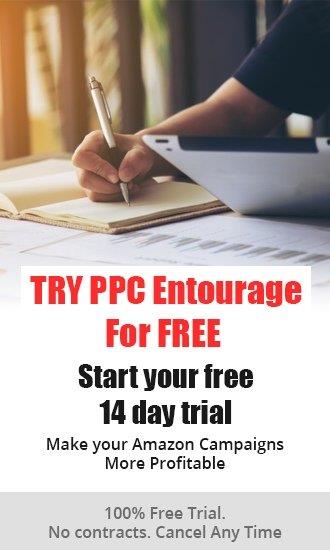As sellers and brand leaders, we know that the world of Amazon sales is ever-changing. With every year, our business becomes more complex, and competition grows fiercer.
Some things, like how difficult it is to understand your true advertising costs, never change.
This article is an update to our original 2018 blog, Amazon ACoS - Understanding Your True Costs. The original blog has been one of our most helpful articles for the Amazon selling community, but in the years since we first published it, there have been countless shifts in the Amazon landscape. It is with this in mind that we have updated it for 2021.
Basics of Amazon ACoS
New sellers will often ask the question...
What should my ACoS be for my Amazon ads?
This will lead them down a rabbithole of countless posts and Youtube videos, many of which will try to provide a number without ever knowing anything about the seller’s actual costs or goals.
So few of these posts are addressing what ACoS really means, and why it is important. This leaves inexperienced sellers to more or less “guess” what their approximate Amazon ACoS should be.
Don’t guess - calculate.
In order to know what your ACoS should be, you need to know what ACoS means, and how to calculate it.
Once you know how to do this, you can then adjust your target ACoS based on your actual costs and your specific goals.
Defining ACoS
ACoS, or Advertising Cost of Sale, is a metric used to measure the performance of an Amazon campaign.
ACoS is an important metric when running Sponsored Products, Sponsored Brands, Sponsored Brands + Video, Sponsored Display, and Amazon DSP ads.
How Do I Calculate ACoS? What is the ACoS Equation?
ACoS indicates the ratio of ad spend to targeted sales and is calculated by this formula:
ACoS = ad spend ÷ sales.
Profit Margin: The MUST-KNOW Metric
Your profit margin is the amount you make after all costs are subtracted from the selling price. Everything from production, freight, employee salaries, FBA fees, etc. all dig into your margins.
In order to determine whether a certain Amazon ACoS is good or bad, you’ll need to take the entire cost structure of your product into account.
Let’s say you spent $20 on ad spend to make $100 in sales. Your ACoS percentage would be, in this example, 20%.
Once you determine your product’s profit margin as a percentage, you would then deduct the ACoS percentage to get your final margin.
As long as you spend less than your profit margin on advertisement, you won’t incur a loss on your Amazon campaigns. If your ACoS is higher than your profit margin, your ad is operating at a loss.
The lower your ACoS, the lower your ratio of ad cost to sales revenue. Usually (not always) you want as high a sales revenue figure as possible, with as low an ACoS as possible. So, what is a good ACoS on Amazon?
Adjusting ACoS Targets Based on Strategy and Audience
Now that you know what ACoS is, what your profit margins are, and how to calculate your ACoS, let’s discuss how to determine your Target ACoS.
Every Amazon campaign should have a specific purpose. At Entourage Management Services, we build every campaign based on where the target audience is in the Customer Buying Cycle.
By basing our Amazon ads on these advanced marketing principles, we’re able to create Amazon campaigns that consistently move potential customers towards making a purchase.
Ads that target customers earlier in their journey, such as in the Awareness/Discovery phase, should have a slightly higher ACoS as we’re casting a wider net. Ads that are targeting (or retargeting) shoppers later in the cycle should be focused on a smaller potential audience that is more inclined to take action, so the target ACoS should be lower.
Even if you’re not using the Customer Buying Cycle as your strategy, break-even ACoS isn’t always the number you want to use for driving your success as an Amazon seller. Remember, there are varying strategies depending on how aggressive you are and the goals of your particular campaigns. They include, but are not limited to:
- Launching new products
- Spiking sales velocity on a struggling variation
- Selling excess inventory
- Raising brand awareness or running Ranking campaigns
Whether a certain ACoS is good or bad depends on the marketing strategy behind it.
Depending on the strategy you are utilizing, you then need to calculate either the “break even ACoS” (using your Profit Margins) or the “target ACoS” in order to assess whether a certain ACoS is good or bad.
KPIs to Watch & Consider in Determining the Right Target Value for an ACoS
Without these metrics, the ACoS will not give you all the information you need to determine how profitable your SP campaign is or not.
Impressions: How popular is the item that you are selling? Are the impressions high, which would mean the product is in a popular category, or are they low, meaning Amazon is displaying the ad often, but that product is not popular?
Total Clicks: What is your click-through rate? If that number is low, then the positioning of the ad may not have been good, or potential customers were not drawn to the ad enough to click it.
Overall Sales: How many clicks were there and how many sales resulted from those clicks? A lot of clicks and very few sales means your ad may need to be changed (or there is an issue with your listing).
Tips For Properly Using ACoS as a KPI
ACoS (Advertising Cost of Sales) is one of the most important metrics for evaluating your Amazon campaigns. While it is a fantastic tool, it is not the end-all-be-all for measuring the success of your ads.
- Remember that the most successful Amazon sellers have learned to exercise patience with it. During the first week of most Amazon campaigns, ACoS will almost always be skewed. Allow the campaign enough time to generate real, trending data (typically two weeks).
- ACoS may look bad if there are problems unrelated to your ads. If you have an unusually high ACoS, but you also have an unusually low conversion rate and/or CTR%, this means that you may have an issue with your listing, not your ad.
- Know the difference between ACoS and TACoS. TACoS, or True ACoS, includes organic revenue. For more on TACoS, review this blog article, What Is Amazon TACoS?
Need More Help?
If you need a robust Amazon advertising strategy developed for your brand, based upon your specific margins and ACoS goals, consider working with the experts at Entourage Management Services. They will construct an advanced advertising strategy based on your unique goals and budgets, and handle every aspect of your day to day advertising management.
Entourage: Software to Scale Amazon Ads and Results Driven Management.











